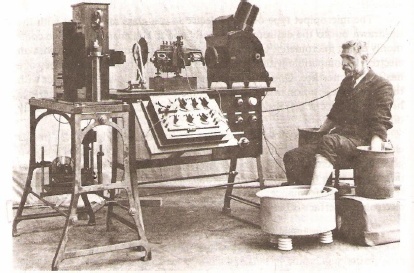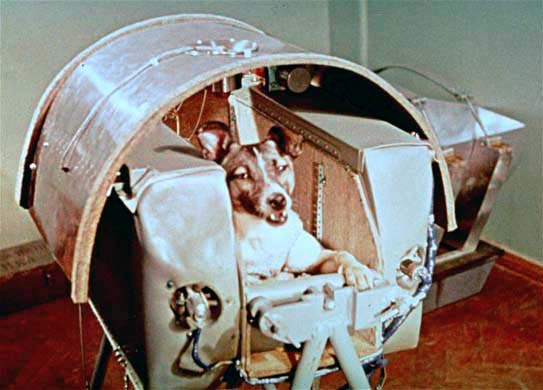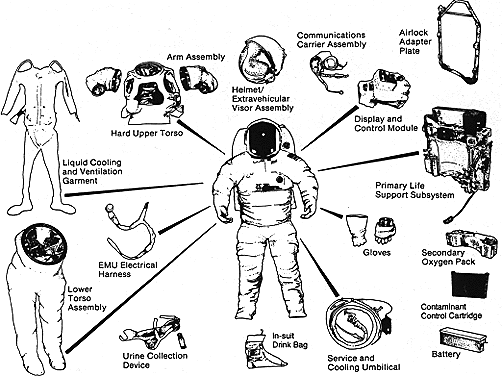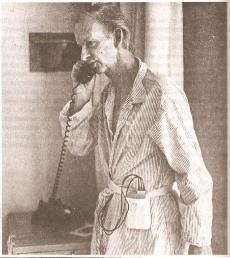History of Biotelemetry
As previously defined, biotelemetry allows for the measurement and transmission of physiological data. The field of biotelemetry has been around for over a century. The first true biotelemetric system was made by Linthoven in 1903. The device was an electrocardiograph, designed to monitor the electrical impulses of the heart. However, because the device was large and immobile, the patient had to remain attached to the machine if he/she wanted to remain connected to the electrocardiograph (please see photograph to the right). The device used telephone wires to transmit the data to Linthoven's laboratory. This allowed him to diagnose his patients from afar by interpreting their physiological data from his laboratory. (Citation c1 for both picture and information) |  |
The next major advance in biotelemetry came with the Space Race. The Soviet Union started it off by launching Sputnik into space in 1957. The Soviets followed that up by sending a dog named Laika into space. She was sent into space in order to determine the physiological effects of exposure to zero-gravity. Laika was hooked up to electrodes covered in the antibiotic streptocide to monitor her vital signs (please see Laika on the right). Her monitoring system was typical of the era, in that it was cumbersome and bulky, and that it required that the patient remain physically connected to the machine at all times. |  |
The United States decided to enter the Space Race in 1958 and, in 1961, President John F. Kennedy promised to put a man on the moon. However, NASA wanted to monitor the health of the astronauts wirelessly. This objective provided the genesis of the modern field of biotelemetry, as the space-suits were fitted with monitoring sensors to allow the medical specialists at the Houston Command Center to monitor the health of the astronauts. Transmitted data included heart rate, body temperature, CO2 and O2 levels in bloodstream, and heart rate. One of the major reasons this was revolutionary was because it was transmitted wirelessly, rather than sent over wires as had been done before. | Above is a video describing NASA technology adapted for general-medical use. (Citation d1) |
Below is a schematic showing the basic elements of a US astronaut space-suit. Of interest are sensors and control units necessary for wireless transmission of physiological data. (Citation e1)

Later it became apparent that developments in biotelemetry used for astronauts could be applied to hospitals. Hewlett Packard developed a portable electrocardiograph in 1972, the HP 71800A, which eased the lives of countless patients by allowing for increased mobility, while still allowing 24-hour monitoring of their heart condition. Hewlett Packard's device set off a revolution for wireless biological monitoring in the public sector-- ushering in the modern commercial era of biotelemetry. (Citation c2) The patient on the phone at the right is capable of experiencing nearly the full spectrum of mobility that a healthy person can. (Citation c1) The device is attached to the chest using electrodes, as seen on the patient at bottom right. (Citation c1) |   |